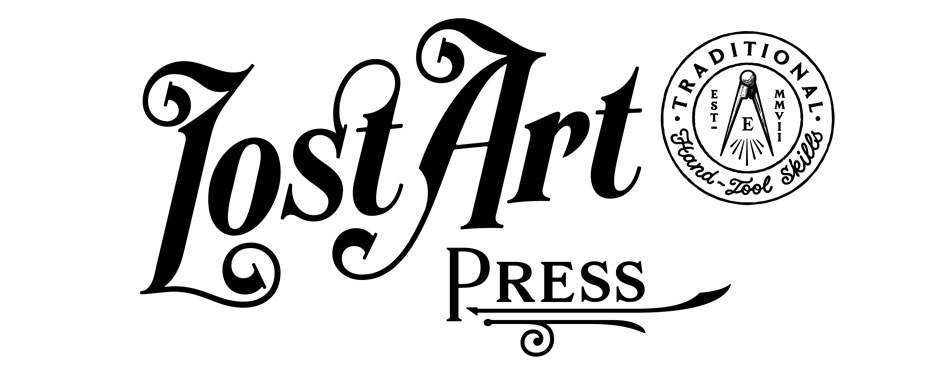
The editorial staff is currently on the road to Wales, which is why we haven’t been posting much on the blog this week. Despite our remoteness (physically) we’ve been working on Lost Art Press stuff the whole time.
Here are some updates on new things and reprints.
“Dutch Tool Chests” by Megan Fitzpatrick should ship from the printer this week. We’ll have it up for sale next week. All copies purchased directly through Lost Art Press will be signed by the author.
“Good Eye” by Jim Tolpin and George Walker is in its final stages. George and Jim have a few corrections to the text. We’ll make those when we return. Then the book will be off to the printer – and out right before Christmas (assuming no publishing tragedies).
“American Peasant” (second printing) should be back in stock by Nov. 13. The second printing will have a completely different cover than the first printing.
Exeter hammers should be back on sale sometime during the week of Nov. 18. We have a bunch of hammer heads on hand now and are waiting on the handles. With any luck, we’ll have 500 more hammers out in the world by the end of the year.
“The Woodworker” series of books. Many of you have noticed that we are out of stock on all four volumes of our “Woodworker” books. These will be back in print in early 2025 in a nice softcover format. During the pandemic, the prices for making these books nearly doubled. We can’t in our right minds double the retail price on these. So we are switching to a softcover. The binding will be the same: folded, stitched and glued signatures. The only difference will be the cover. We hope to sell the set of four books for $99 as a result.
- Christopher Schwarz







